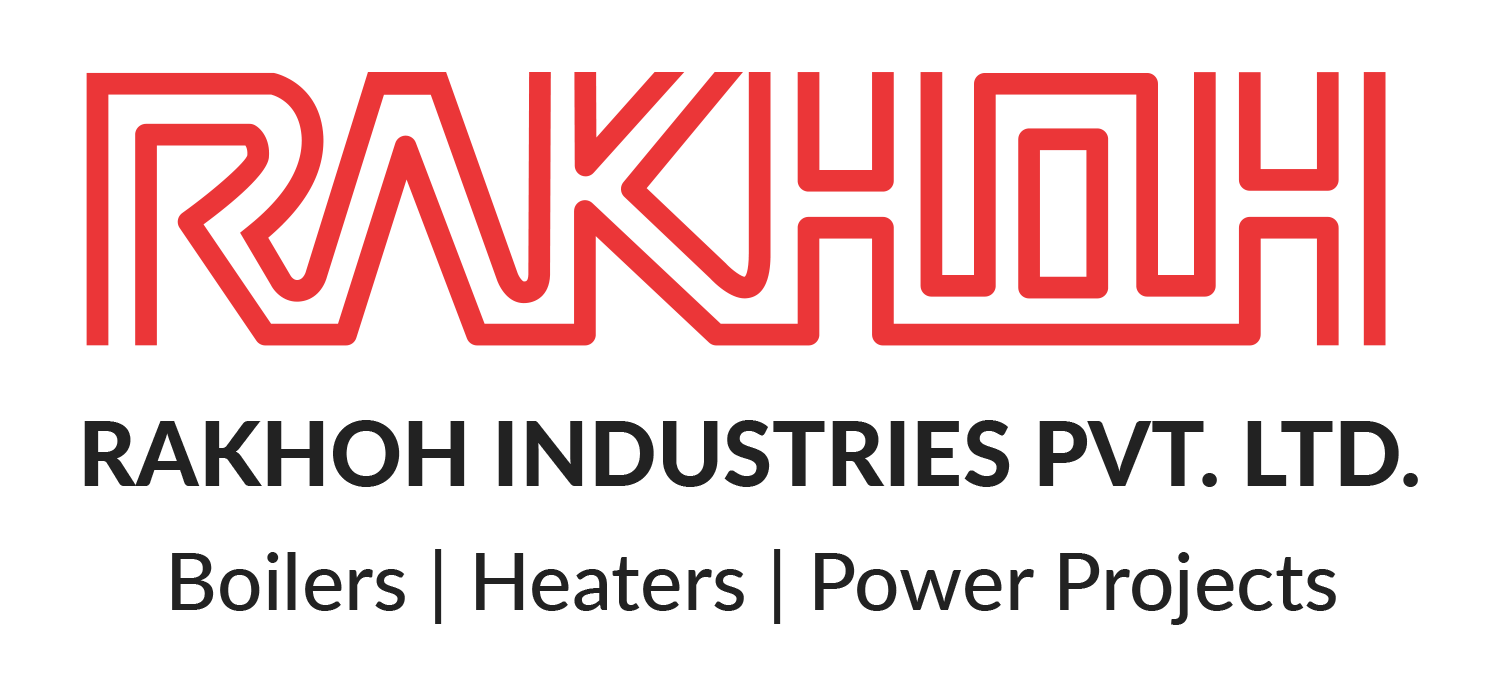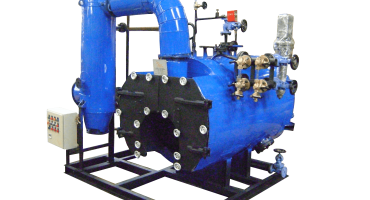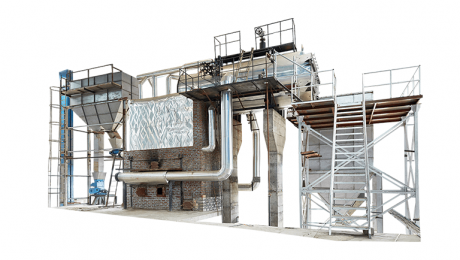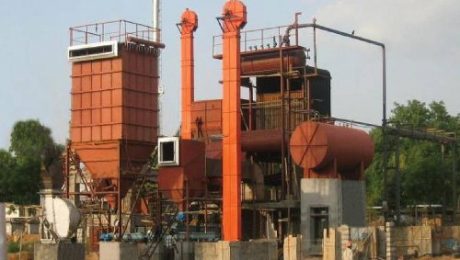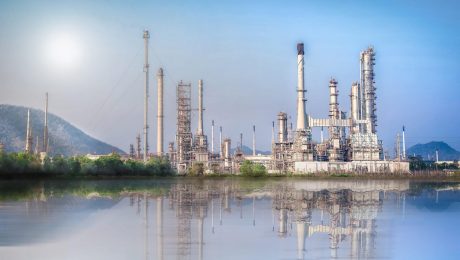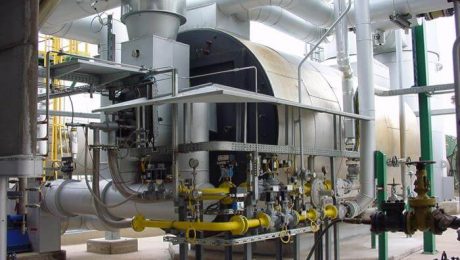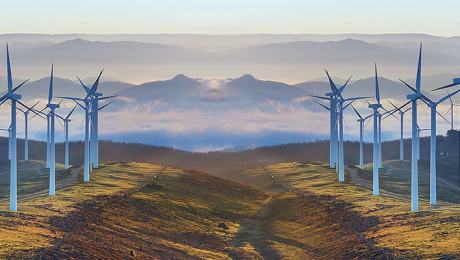An Overview to Improve Efficiency and Advantages of Thermic Fluid Heater
Process and manufacturing industries require equipment for heating purposes. Heating in the industry takes place in two ways, i.e., direct heating and indirect heating. Direct heating involves the heating operation taking place directly through the combustion of fuels, heating filaments, or flame radiations. On the other hand, indirect heating involves heat transfer fluid circulating between the heater and the process. In indirect heating systems, heat from combustion sources like fuel is passed to the hot oil or thermal fluid. The heat is carried to the exchangers, such as reactor jackets, calendar rolls, platens, molds, etc. The heating system controls temperatures and supplies heat to the heat users from one primary heating unit or multiple units.
The efficiency of Thermic Fluid Heater:
Heat transfer oils are petroleum-based, either mineral or synthetic. The oil degrades as it comes in contact with high temperatures, air, or poorly designed circulation piping systems. The byproducts of degradation are soot, coke, carbon, and sludge that circulate through the overall process. It reduces the overall heat transfer efficiency, leading to higher operational costs, the danger of fire, and higher maintenance costs.
There are two primary components of a thermal fluid heater that impact its overall efficiency. The first is the design of the heater pressure vessel and the second is the burner. The thermic fluid heater is limited by the efficiency rating that drops the stack temperature below the dewpoint. The efficiency rating is usually 84% to 85%. The oil heater is fitted with an economizer to exceed 85% efficiency, which is a heat-exchange device in a boiler or thermal fluid heater that improves efficiency and saves fuel.
Pressure Vessel Efficiency:
A thermic fluid heater must harness as much heat from the combustion process as possible before the exhaust gasses exit the heater. The longer it circulates in the unit, the more efficiently the heat is transferred to the pressure vessel and later, to the hot oil. Therefore, reducing the temperature of the exhaust gasses significantly improves the efficiency. Similarly, the improved efficiency leads to using less fuel to produce the same heat in the process.
In thermic fluid heaters, two sets of coils are designed for allowing three passes of the hot gasses over the heating surfaces. Some boiler manufacturers gather additional efficiency from the hot gasses through fins on the coils and by offering stack economizers. It is particularly helpful if the plant needs heated water as the wasted heat exiting the thermal fluid heater is used for heating the water. If hot water is not required, an economizer may or may not contribute to the overall efficiency.
Burner Efficiency:
The primary function of the burner is mixing the gas and air for combustion and controlling that combustion for the firing rate to match the load. Burner efficiency is determined by mixing the gas and the air and providing an effective burn close to the burner head. Efficient burners are defined as ones that burn clean with little or no carbon monoxide (CO) and a minimal amount of excess air. Too little air leads to a burner with unburned fuel that translates to carbon monoxide.
An optimally efficient burner can achieve complete combustion with 2% to 3% of excess oxygen without releasing carbon monoxide (CO). Since CO2 is produced in the combustion process, a higher CO2 percentage leads to a lower oxygen percentage. It results in increasing efficiency.
It is also necessary to consider the burner tune or the gas/air mixture. It is imperative to bring changes in tuning between low fire and high fire for keeping the burner in perfect tune during all firing rates.
Tips to Increase the Efficiency of Thermic Fluid Heater:
Optimizing the Pump:
Pumps require the most energy as equipment in any plant and must be selected wisely. Similarly, the proper configuration of the pump can result in significant savings by avoiding operational costs. Some ways to optimize the pumps in a thermic fluid heater are:
Reducing Pressure Losses:
Pressure losses cause higher power consumption and also result in the non-optimal use of pumping systems. Some of the ways to reduce pressure losses in the different components of a thermic fluid heater are:
Using higher cross-sections in the piping to reduce pressure loss.
Pre-assembled pump systems as it has a compact design with short piping lengths to keep pressure losses in check.
Larger openings in pumps or fittings reduce the pressure losses.
Quality of Heat Transfer Fluids:
Heat transfer oils of higher quality are ideal as they are more stable. Such fuels with better heat transfer properties reduce the production time. Reduced process times result in less chances of production failures. The lowered maintenance or repair work increases productivity by minimizing the downtime of the plant.
Optimization of Firing Plant:
The overall efficiency of the thermic fluid heaters is also achieved by optimizing the firing process. By installing rotary speed controls for combustion fans, process plants improve firing efficiency and reduce start-up losses. Similarly, reducing exhaust gas losses, using air pre-heaters, controlling oxygen intake, etc., can increase the efficiency of the firing process.
Advantages of Thermic Fluid Heater:
Thermic Fluid Heater by Rakhoh Boilers:
Rakhoh is a leading name as boiler manufacturers for Steam boilers, Boiler accessories, Waste Heat Recovery Boilers, and Thermic fluid heaters for more than 38 years. Our thermic fluid heater comes in a compact, horizontal design. The 4 pass design with a proven coil ensures instant heat and automation control maintains thermic fluid temperature. It includes ID and FD Fans, Internal Air Preheaters, an Automation system, etc.
It consists of various grates, an auto-feeding system with screw feeder, and a Fluidized Bed for optimal combustion. Our Thermic Fluid Heater offers a multi-fuel firing option, optimal energy utilization, reliability, and up to 82% efficiency.
For More Info Visit : www.rakhoh.com
- Published in Boiler, Steam Boiler
Factors To Consider Before Choosing A New Industrial Boiler
One of the most integral equipment in the process and manufacturing industries is the industrial boiler system. Steam is essential for performing the various operations in the plants. Therefore, industries take various factors into account before deciding on a boiler manufacturer for their plants. Not only is investing in a new boiler system an expensive affair, but it also needs assurance of longer performance and efficiency for seamless operations. The process plant tries to get as many years out of the boiler as possible, by conducting routine maintenance. It results in not only extending the life of the steam boiler but also improving its efficiency. On the other hand, regardless of how well anyone maintains a boiler system, it will eventually need to be replaced.
Factors to consider while selecting a new industrial boiler system:
Several factors are taken into account by the plant owners before they decide on a boiler manufacturer. Some of the noteworthy factors are as follows,
Expenses spend for repairs:
It is necessary to take a closer inspection on how much money is spent on repairs. It is necessary to stop investing money into repairs if there is a significant increase in the repair bills or if frequent assistance of boiler maintenance is required for the process plant. Even though replacing a boiler is an expensive process, it is even more expensive to continue repairing the old system. If the cost of repairs is rapidly growing, it is time to install a new boiler for the industry.
How old is the current boiler?
It is also important to consider how old the current industrial boiler is. Boilers can function for several years depending on when it was manufactured, what purpose it serves, and its maintenance. If process plants have had the same commercial boiler for a couple of decades, it may be time to replace it.
Energy efficiency:
Energy efficiency is a major factor to take into account while choosing an industrial boiler system. Boiler manufacturers in India and all over the world consider the environmental impacts of their manufactured products.
Warranty of the boiler:
Top boiler manufacturers advise to always consider the terms of the warranty. A warranty is particularly important in inspecting how reliable the boiler system will be. Most of the warranties range from 10 to 15 years. However, industries must always be on the lookout for a longer warranty with good terms and conditions.
Size and space considerations:
The size of the steam boiler is imperative to fit it in the boiler room. Usually, process plants look for a boiler that has as small of a footprint as possible, as it saves both space and money. The smaller-sized boiler creates flexibility in space. It creates additional space in the boiler room and the possibility for multiple modular boilers working on the same system to improve efficiency and reduce the operating costs even further.
Safety of the boiler:
Safety should always be the utmost priority while choosing a new boiler. Sometimes, conventional steam and hot water boilers become overheated, leading to the build-up of high-pressure steam that can cause a hazardous explosion. One way to prevent the risk is installing a boiler system designed for low water content operation. With such industrial boilers, the amount of steam build-up cannot do excessive damage even if the unit malfunctions.
Another risk with conventional boilers is their design itself. The maintenance for these units requires the opening of heavy steel doors, realigning them, and closing them again by standing on a ladder which may result in various injuries.
Emissions:
With the ever-increasing air pollution, greenhouse gasses, and the environment, boiler manufacturers are making sure to prevent any harm caused by the industrial processes. Various industries face difficulties due to emissions from the use of conventional boiler systems. Even while using natural gas, these boilers release large amounts of CO2 and toxic nitrogen oxides (NOx) into the atmosphere, damaging the environment.
Easy Maintenance:
It is also important to consider how frequently the maintenance of the boiler system will require it to function at its best for as long as possible. Low-quality boilers require regular repairs that lead to excess costs and may result in replacing the boiler sooner than expected. A well-maintained steam system includes more than the pressure vessel condition itself. Effective monitoring and control systems can also help in identifying and fixing small problems before they turn into bigger issues.
Conclusion:
Rakhoh Boilers is one of the trusted boiler manufacturers in Pune since 1983. With 39+ years of experience and expertise in thermal solutions, we deliver highly efficient and reliable industrial steam boilers, waste heat recovery systems, thermic fluid heaters, and boiler accessories to over 20 process industries in 27 countries worldwide. We provide excellent boiler services to boost the efficiency and productivity of the boilers.
Visit www.rakhoh.com for more details on our products and services
- Published in Boiler, Steam Boiler
Factors to Consider and Tips for Steam Boiler Replacement
Steam Boilers are crucial for the processing operations in manufacturing industries throughout the world. As a leading boiler manufacturer and thermal solutions provider, Rakhoh Boilers are proficient in detecting inefficiency in the steam boiler system. However, reduced efficiency does not necessarily call for boiler replacement. It is important to understand that boiler replacement is an expensive and time-consuming process that should be considered a last resort. Steam boilers are an integral asset that operates efficiently for two to three decades if properly and regularly maintained. It is essential to understand signs that detect the requirement of boiler replacement and take the necessary course of action.
Factors to Consider for Steam Boiler Replacement:
While considering boiler replacement, it is prudent to assess three important factors- Safety, Economic, and Requirement Changes
Safety Changes:
Safety issues are usually detected during regular inspections as the inspectors check the condition of pressure vessels and boiler safety equipment. Along with a regular examination of steam boilers, it is necessary to monitor the process operations.
Excess Cycling:
Consistent starting and shutting off steam boilers increases the thermal cycles that impact the pressure vessel. Fatigue in boiler steel is caused due to excess thermal cycles and resultant stress.
High Stack Temperature:
Stack temperature exceeding the normal level indicates poor heat transfer and hazardous conditions due to poor water quality, improper combustion, and low water levels.
Improper Starting and Shutting:
Irregular starting and shutting indicate the improper functioning of the operating and safety controls of the steam boiler.
Poor Combustion Tuning:
Error in fuel and airflow leads to pulsations and surging. It is usually caused by problems in the combustion fan, improper burner adjustment, improper stack design, and conditions.
Safety issues in steam boilers generally occur as waterside issues or fireside/combustion side issues. In most cases, issues in waterside are caused by poor water treatment that includes,
Water Hardness:
Scaling develops on the steam boiler tubes due to the absence of a water softener or improper water treatment. The scale formation hinders the heat transfer and results in overheating.
Poor Water Chemistry:
Lack of water chemistry control leads to caustic embrittlement that causes tubes to lose their vital mechanical properties.
Presence of Oxygen:
Improper water treatment system leads to oxygen pitting on the surface of the tube that consequently leads to corrosion.
Quenching:
Improper tuning:
Improper tuning leads to improper combustion and carbon deposits.
Outdated control equipment:
Outdated controls result in poor air and fuel control
Unsafe operating controls and safety equipment:
It includes unreliable flame scanners, safety relief valves, pressure and temperature switches, etc.
Economic Changes:
Reduced efficiency in steam boilers is a significant reason to consider boiler replacement. That is because inefficiency in the boiler leads to acceleration in fuel costs and operating hours. Therefore, improvements towards the efficiency of the steam boiler can considerably save the costs of the processing facilities. Along with it, consideration of the extent of reparation determines the need for boiler replacement. Sometimes, the cost of repairing can be expensive enough that boiler replacement would be a better alternative.
Requirement Changes:
Advancement in technology and steam boiler design indicates that investing in boiler replacement would be a wise decision in the long run. An oversized boiler operating in a low range and occupying the majority of space is less desirable than boiler systems that are optimal for the load requirement. Such boilers can substantially reduce the excess costs and provide enhanced efficiency and performance. Plant managers can consult expert boiler manufacturers to understand their processing unit requirements.
These considerations must be given due attention before deciding on boiler replacement. Along with it, current and future plant loads should also be considered before replacing the boiler system.
Tips for Boiler Replacement:
Conclusion:
Rakhoh Boilers is a trusted boiler manufacturer in Pune since 1983. With 38+ years of experience and expertise in thermal solutions, we deliver highly efficient and reliable industrial steam boilers, waste heat recovery systems, thermic fluid heaters, and boiler accessories to over 20 process industries in 26 countries worldwide. We provide excellent boiler services to boost the efficiency and productivity of the boilers.
Visit www.rakhoh.com for more details on our products and services
- Published in Boiler, Steam Boiler
Dust Collectors in Industrial Steam Boilers and Its Impact
As we are aware, steam boilers play an integral role in the manufacturing and process sector for heating, processing, and sterilizing purposes. Although most process industries aim for high efficiency and production in minimal time, one of the most overlooked factors in the heating process is the dust collection and management that causes severe harm to the operating personnel and the environment. Yet, dust collectors are pivotal in ensuring that the steam boilers are functioning efficiently and safely. Just like any other equipment, industrial dust collectors too require regular maintenance. The dust collector system consists of ductwork, hoods, air-material separators, explosion protection, different airlocks, and exhaust fans and includes cyclone dust collector, baghouse, electrostatic precipitators, wet scrubbers, etc.
A Brief Overview of Dust Collectors:
Multi-cyclone dust collectors have been used along with air preheaters and steam boilers in energy generation and other process industries since the 1950s. Gradually, it has evolved in design and purpose, yet its function remains crucial in many process heating applications. In some cases, dust collectors are installed with air preheaters and steam boiler economizers for the purpose of recycling material and to add another layer of erosion protection. Multi-cyclone dust collectors without moving parts use centrifugal force for separating the particulate from the flue gas as it exits the steam boiler. Dust collectors can remove anywhere from 60% to 99% of the debris from the flue-gas stream.
Components of Dust Collection System:
Dust Collector Hoods:
Dust Collector Hoods are an essential component of a dust collector system that can produce remarkable results with minimum modifications. It is important to examine blown, ripped, or broken filter media, cracked filter assembly, airflow speed to ensure the designed airflow, inaccurate installation, separated bag filter, or a mechanical breakdown of the tube sheet due to abrasion. It must be ensured that it is operating in the right position, if the restricted damper is found by hood for balancing.
Ductwork:
Ductwork is used to extract the dirt and air from the accumulating point of the collector. It must be sized precisely for producing a carrying velocity to keep dust moving.
Explosion Protection Equipment:
An explosion can be caused by a dust collection system preserved incorrectly. A properly designed dust collector managing combustible dust always includes an explosion protection system. The purpose of the explosion protection equipment is to restrain an explosion and reduce hazardous damage.
Air Material Separators:
An air material separator is a mechanical device to divide the conveying air from the material being conveyed.
Rotary Airlock:
A rotary airlock separates the dust collector hopper externally allowing the collected dust to exit the system. Usual types of airlocks include rotary valves, trickle valves, double dump valves, and knife gates.
Rotary valves:
The main objective of a rotary airlock valve is to provide an air seal at the outflow opening of the dust collector hopper. It is installed usually between the hopper flow and a conveyor or release bin.
Trickle valves
Trickle valves, also known as vacuum valves, are used for managing the airlock seal on the dust collector tank and for discharging bulk solid material.
Dust Collector Exhaust Fans:
Dust collection systems require an exhaust fan for stimulating ventilation air from the position of acceleration through the ductwork.
Corrosion and Erosion of Metal in Dust Collector System:
Dust collectors become ineffective due to significant damage caused by erosion or corrosion. Multi-cyclone dust collectors are impacted by abrasion through fly ash, particulate mass, and high-velocity gas flow that causes corrosion from chemical attacks. In severe cases, an ineffective dust collector leads to the failure of vital equipment like tubular air heaters, induced-draft fans, precipitators, or baghouse components. Additionally, a dust collector’s operating efficiency may drop significantly due to changes in velocity and pressure drop when ash or other particles plug a cyclone or tube. An overload of particulates may also plug other equipment in the path of the flue-gas flow.
Therefore, regular inspections allow temporary internal repairs during the inspection process, prolonging the life of the equipment and delaying its replacement.
Advantages of Regular Maintenance of Dust Collector System:
Conclusion:
Rakhoh Boilers are one of the leading manufacturers of industrial steam boilers in Pune since 1983. Over 38+ years, Rakhoh has successfully installed more than 3000 boilers in 26 countries worldwide. We also provide excellent boiler services like energy audit, boiler automation, steam trap assessment, annual boiler maintenance, fuel conversion, etc.
For more details on our products and services, visit www.rakhoh.com
- Published in Boiler, Steam Boiler
Design and Role of Fusible Plugs in Fire tube Boilers
Steam boilers are classified into two types, namely fire tube boilers and water boilers. As the name suggests, fire tube boilers function by flue gases passing through fire tubes immersed in water, whereas water tube boilers operate by water flowing through water tubes placed in a firebox. Steam boilers are an important asset for the process operations in the industries but can be a potential bomb if left overlooked. Boiler explosions can cause tremendous loss and injure the operating personnel. Therefore, boilers include safety equipment to avoid any hazardous mishap. One such equipment is the fusible plug that prevents the exceeding temperature in fire tube boilers resulting in a boiler explosion.
What is a Fusible Plug?
A fusible plug is equipment that boosts the safety of the steam boiler and acts as a warning device against overheating. Fusible plugs are found in fire tube boilers and are usually considered the last resort or warning to avert any hazardous failure such as a boiler explosion. Just like safety valves help to protect the boiler system from overpressure, fusible plugs help to safeguard steam boilers from over temperature. Fusible plug is widely acknowledged as the preferred safety equipment for fire tube boilers by many industries due to its simple design, effectiveness, and improvement in safety.
Design and Material of Fusible Plug:
Fusible plugs include a fusible alloy made of tin material. The fusible plug itself is made of brass, bronze, or gun material with a threaded plug body that makes it easy to install. It is a hollow gun metal plug screwed at the apex of the firebox. The main metal plug and hollow gun metal plug are separated through an annulus fusible material. A flange protects the material from the fireside. The fusible plug has a high melting point, while the fusible alloy has a low melting point of 232°C (450°F).
The Role of the Fusible Plug:
The fusible remains immersed in water with the water in the fire tube boiler at a normal level. As the temperature does not reach the melting point of the fusible alloy, the heat is transferred to the water. As the temperature in the boiler increases, the water level starts decreasing and generates steam. On the other hand, the fusible plug above the firebox gets overheated by the exceeding temperature, and the fusible alloy starts melting. It results in steam and water immediately rushes through the fusible plug to extinguish the fire in the firebox, thus preventing boiler explosion. The fusible plug body is shaped in a way to alert the operating personnel of system pressure vents by a whistling sound. Fusible plugs reduce the possibility of boiler accidents taking place due to low water firing. The low water level in the boiler system leads to overheating of the heat transfer surfaces that can cause catastrophic accidents. It is advisable to replace the fusible plug after two years as they probably get defective after a long period of use.
Where is the Fusible Plug Installed?
Fusible plugs in fire tube boilers are located around 1 to 2 inches above the top row of tubes. Usual locations for the fusible plugs include the crown sheet i.e., the apex of the combustion chamber, rear tube sheet, and front tube sheet. The fusible plug location depends on the boiler design.
Faults and Inspection of Fusible Plugs:
Conclusion:
Rakhoh Boilers are one of the globally leading boiler manufacturers for more than 38 years. We have provided efficient and reliable water tube boilers, fire tube boilers, waste heat recovery systems, thermic fluid heaters, and boiler accessories for over 20 process industries worldwide. With proficiency in thermal solutions, we offer the best boiler services like energy audit, steam trap assessment, boiler automation, annual boiler maintenance, etc., that enhances the productivity and lifespan of the boiler.
To know more about our products and services, visit www.rakhoh.com
- Published in Boiler, Steam Boiler
